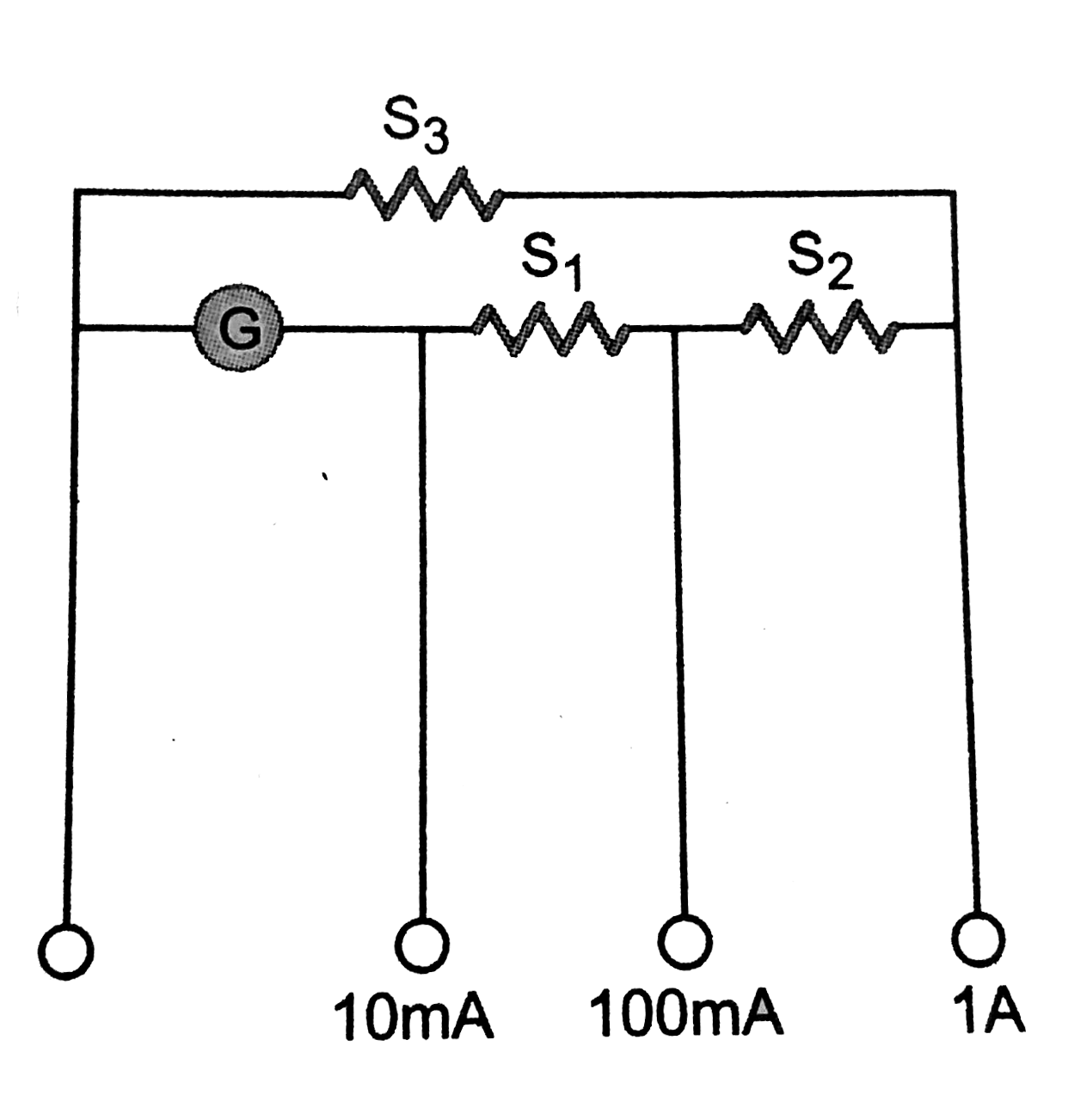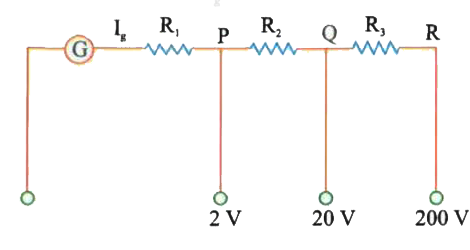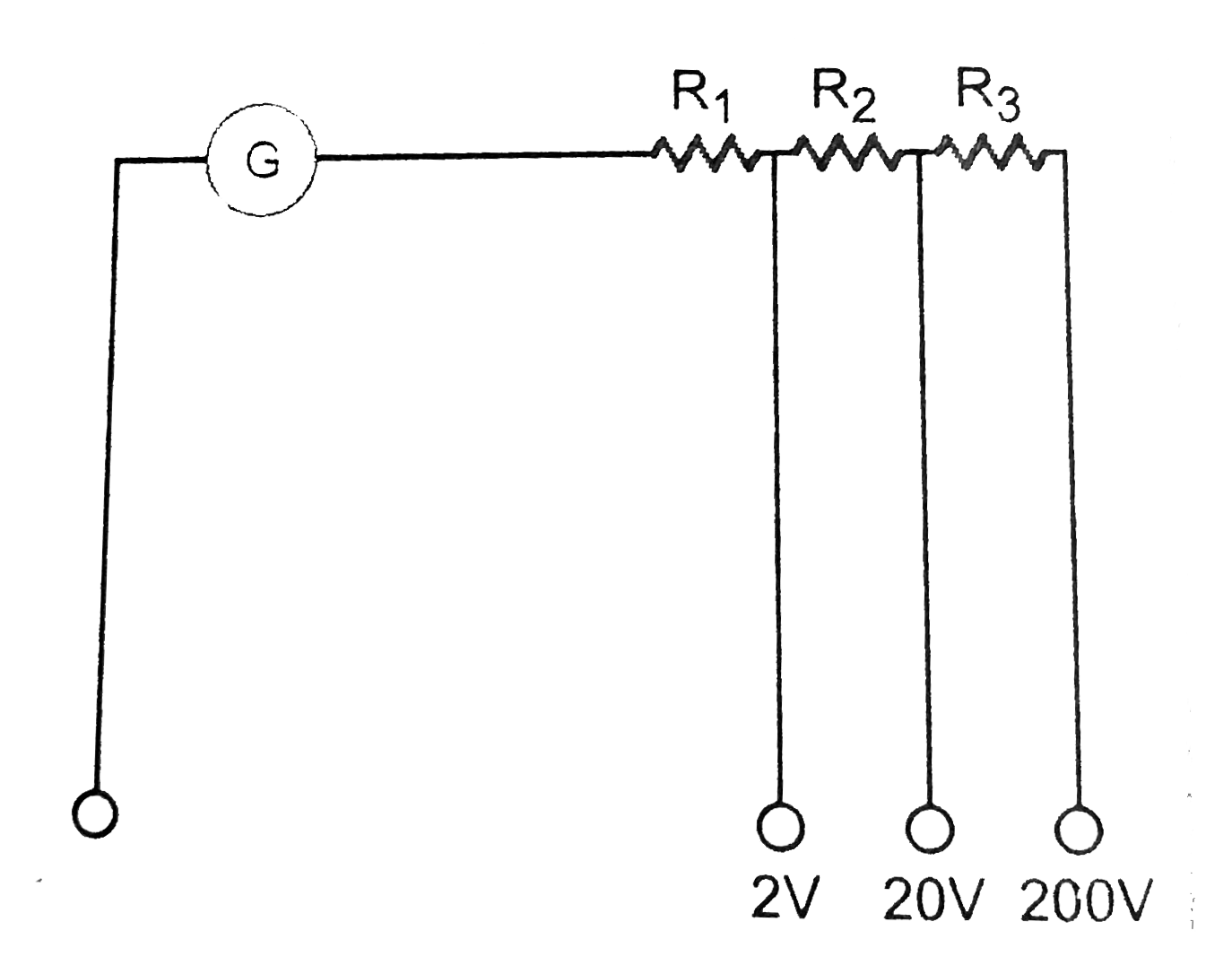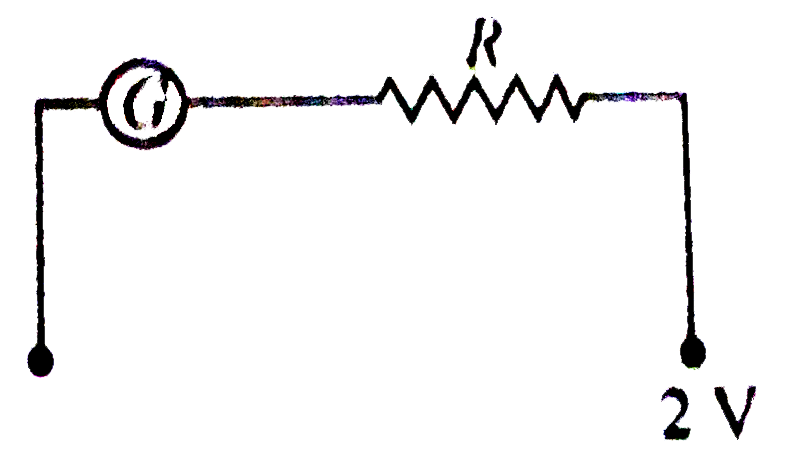A multirange current meter can be constructed by using a galvanometer circuit as shown in figure. We want a current meter that can measure 10mA, 100mA and 1A using a galvanometer of resistance 10Ω and that produces maximum deflection for current of 1mA. Find S1,S2 and S3 that have to be used.

18KΩ
180kΩ
1.8kΩ
1800kΩ
The correct Answer is:A
Here , Ig=1mA=1×10−3A,G=10Ω
R1=?,R2=?,R3=?
Using R+G=Vig

At point P, R1+10=210−32000Ω
R1=2000−10=1990Ω=1.9kΩ
At point Q,R1+R2+10=2010−3=20000Ω
R2+2000=20000
∴R2=18000Ω=18KΩ
At point R,
R1+R2+R3+10=20010−3=200000Ω
∴R3=200000−1990−18000−10
180000Ω=180KΩ
Topper's Solved these Questions
- MOVING CHARGES AND MAGNETISMBook:NARAYNAChapter:MOVING CHARGES AND MAGNETISMExercise:EXERCISE - 3
Explore 29 Videos
- MAGNETISM AND MATTERBook:NARAYNAChapter:MAGNETISM AND MATTERExercise:EXERCISE - 4 (SINGLE ANSWER TYPE QUESTION)
Explore 17 Videos
- NUCLEAR PHYSICSBook:NARAYNAChapter:NUCLEAR PHYSICSExercise:LEVEL-II-(H.W)
Explore 9 Videos
Similar Questions
A multirange voltmeter can be constructed by using a galvanometer circuit as shown in figure. We want to construct a voltmeter that can measure 2V, 20V and 200V using a galvanometer of resistance 10Ω and that produces maximum deflection for current of 1mA. Find R1, R2 and R3 that have to be used.

View SolutionA voltmeter which can measure 2 V isconstructed by using a galvanometer of resistance 12Ω and that produces maximum deflection for the current of 2mA. Then the resistance R is

View Solution
Knowledge Check
Galvanometer of resistance 25Ω shows full deflection for current of 10 mA. The resistance required to convert it into 100 V range will be
A9975Ω in seriesB975Ω in seriesC10025Ω in parallelD10000Ω in parallelA galvanometer with a coil of resistance 50Ω shows full-scale deflection when 10 mA current passes through it.
AThe galvanometer can measure a maximum voltage of 0.5 V.B5 A current can be measured if a shunt of 0.1Ω is connected in parallel to it.CIt can be used as voltmeter to measure a voltage of 5 V if 450Ω resistance is connected in series with the coil of the galvanometer.DIt can be used as a voltmeter to measure a voltage of 50 V if 4,950Ω resistance is connected in series with the coil of the galvanometer.A galvanometer of internal resistance 100Ω has a full scale deflection current of 1mA. To convert it into a voltmeter of range 0−10V, the resistance to be connected is
A9000 Ω in SeriesB10,000 Ω in SeriesC9,900 Ω in SeriesD9,800 Ω in Series
A galvanometer has coil resistance 30Ω and full deflection current of 2mA. What resistance is needed to convert it into a voltmeter of 0.2V range.
View SolutionCan we use galvanometer to measure alternating current ?
View SolutionA galvanometer coil has a resistance of 15Ω and the meter shows full scale deflection for a current of 4mA. How will you convert the meter into an ammeter of range 0 to 6A?
View SolutionThe value of shunt to be used to pass 1/10th of the total current through a galvanometer of resistance 100Ω is
View SolutionA galvanometer of internal resistance 100Ω has a full scale deflection current of 1mA. To convert it into a voltmeter of range 0−10V, the resistance to be connected is
View Solution